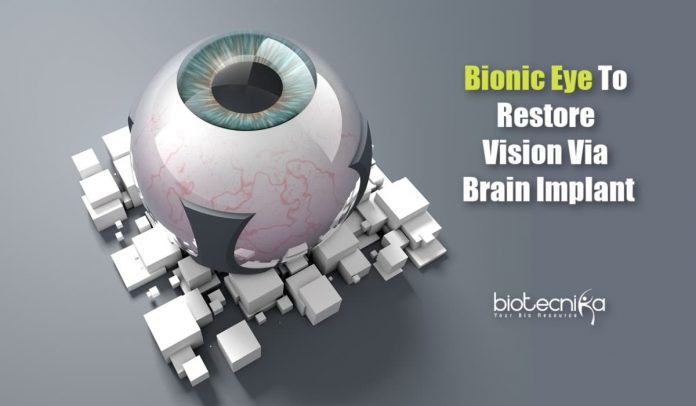Bionic Eye to Help Blind People Recognize Objects And Move Around
A bionic eye that can restore vision through a brain implant has been developed by a team of researchers.
The researchers from Monash University in Australia claimed that their bionic eye could provide the user information about the presence of people and objects and give additional capabilities to navigate indoor and outdoor environments more easily.
Damage of the optic nerves, which connect the retina to the brain, is the underlying cause of blindness in most cases.
Scientists say the new vision system called Gennaris can treat conditions for blind people by bypassing such damage.
A custom headgear that includes a vision processor unit, wireless transmitter, and a camera makes up the vision system. It also includes software that allows the interaction between the components and a series of nine-millimeter square tiles, which can be implanted into the brain.
The vision processor extracts and processes the content sent from the video camera. Each tile will convert the wirelessly transmitted data into electrical pulses by stimulating the brain via microelectrodes.
Professor Arthur Lowery, from the Monash Biomedicine Discovery Institute, said that cortical vision prostheses aim to deliver electrical stimulation to the
region of the brain that receives, integrates, and processes visual information, called the visual cortex and restore visual perception to the blind.The design of the bionic eye developed to help the blind creates a visual pattern from combinations of up to 172 spots of light, which provides information for the individual to recognize the presence of objects and people around them and navigate outdoor and indoor environments, he added.
Monash University collaborated with MiniFAB, Grey Innovation, and Alfred Health to build the system.
Dr. Philip Lewis at Monash University said they might create a new commercial enterprise focused on restoring vision to blind people and providing arm movement to the people paralyzed by quadriplegia if the new vision system turns successful.
The study published in July in the Journal of Neural Engineering shows successful testing of the hardware on sheep.
Professor Rosenfeld, the lead author of the study, said the results indicate that long-term stimulation through wireless arrays can be achieved without visible behavioral issues, seizures resulting from the stimulation, or induction of widespread tissue damage.






























